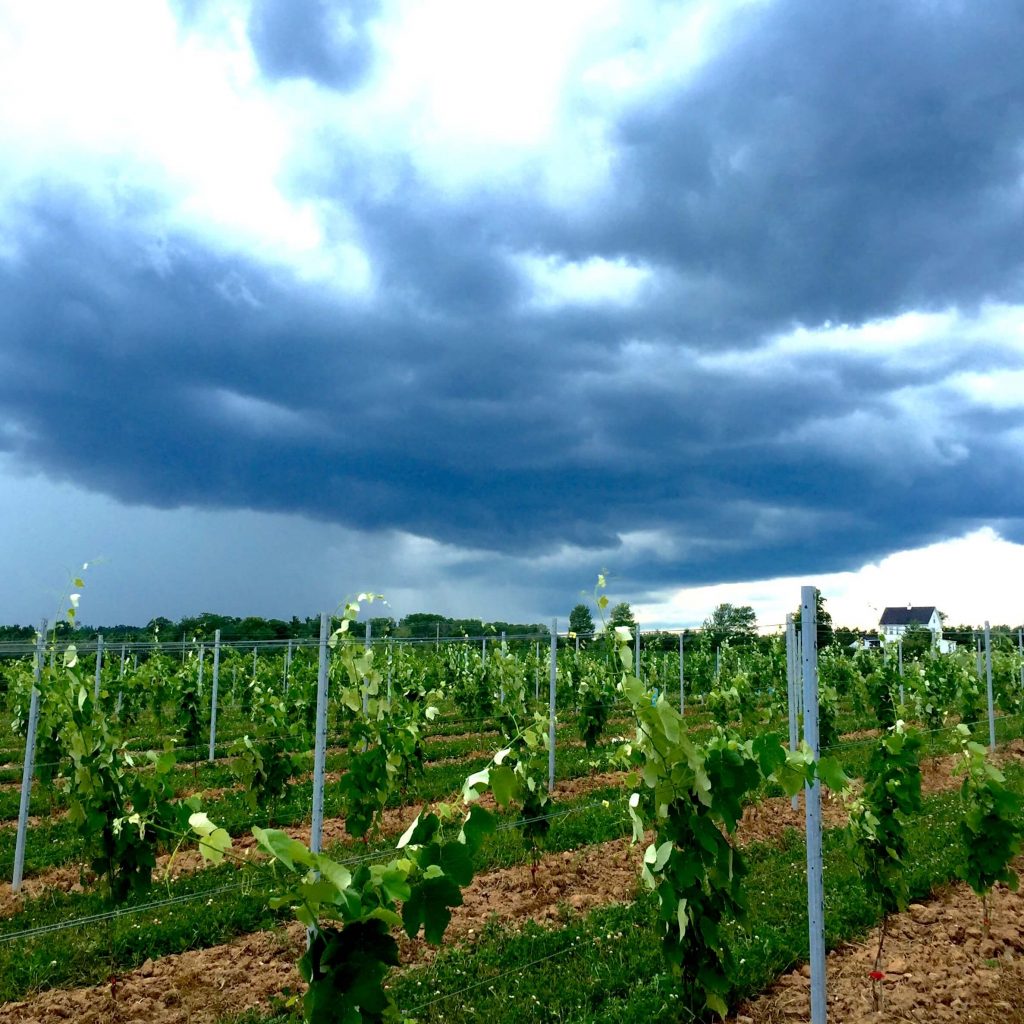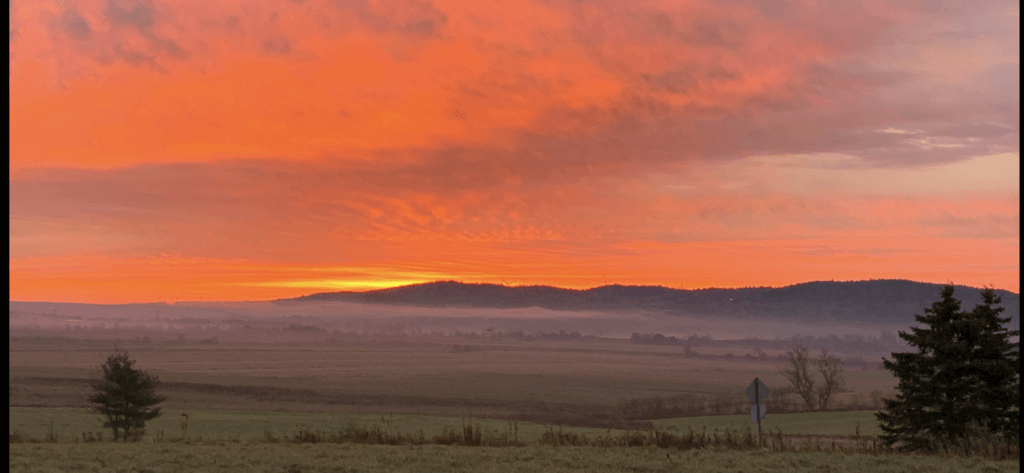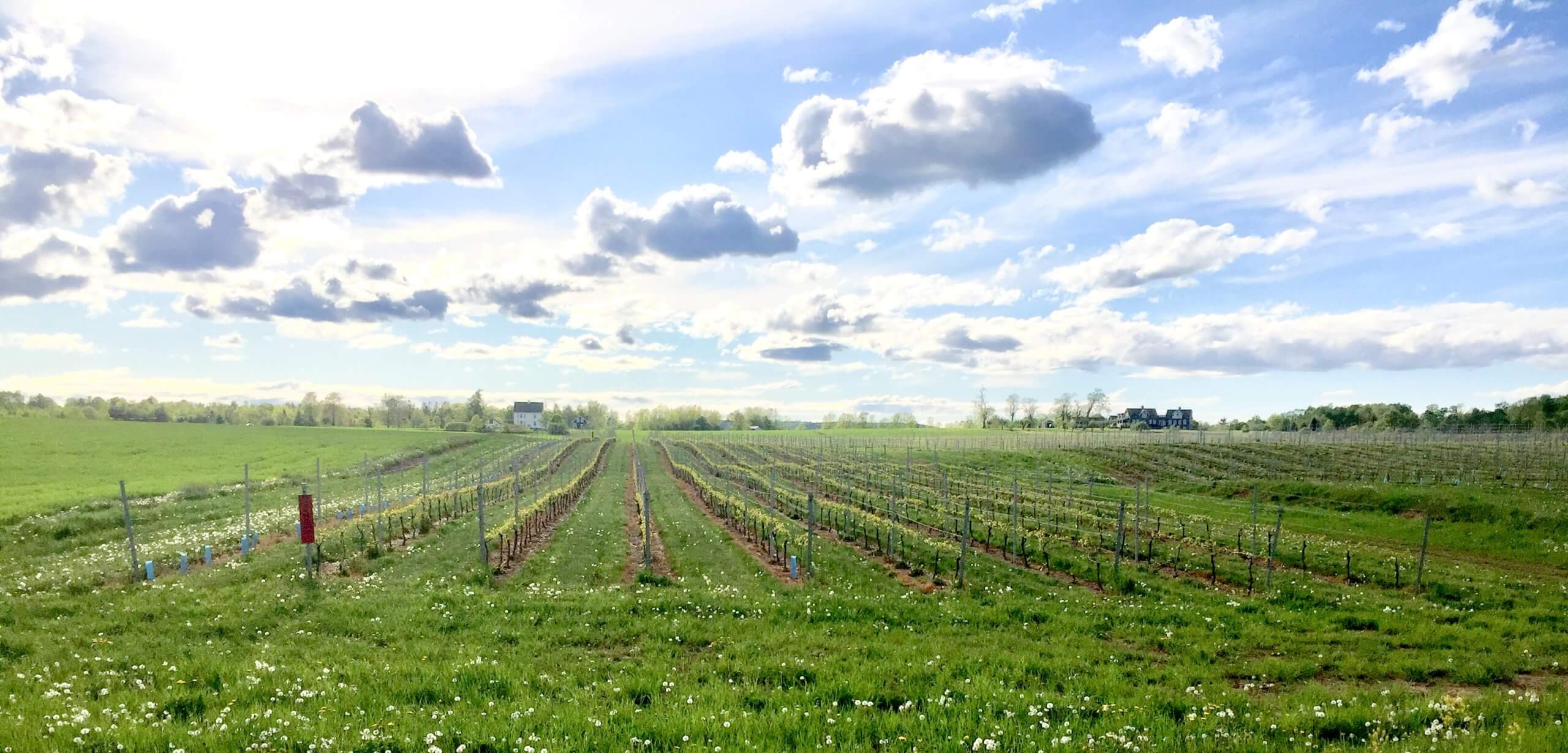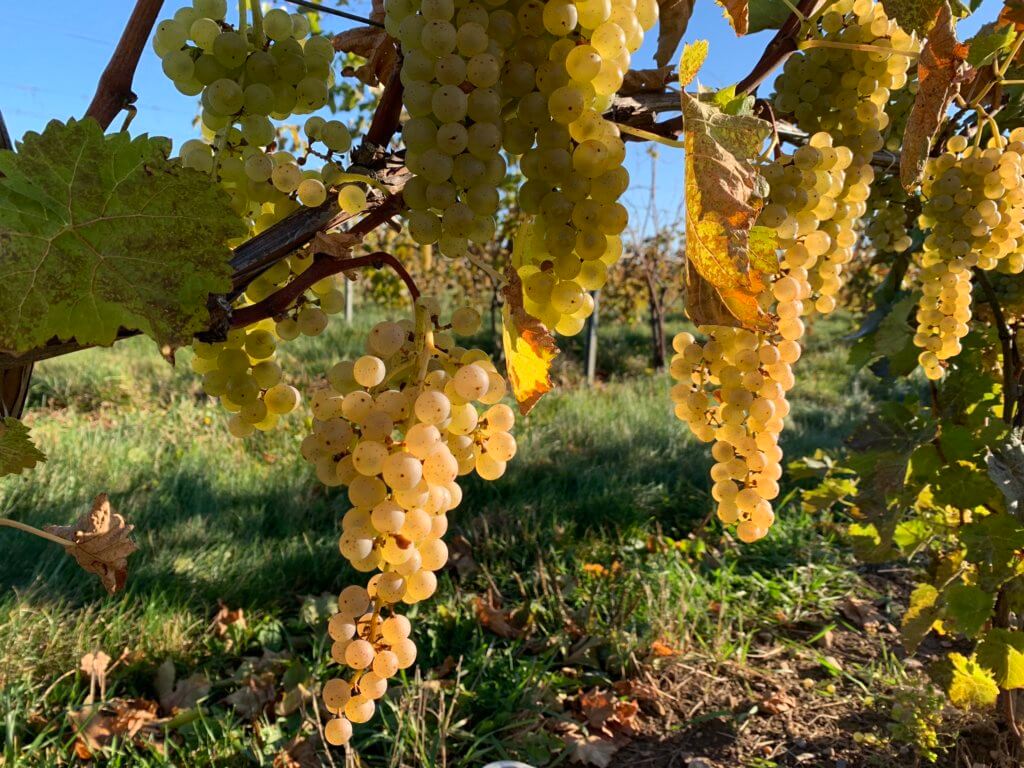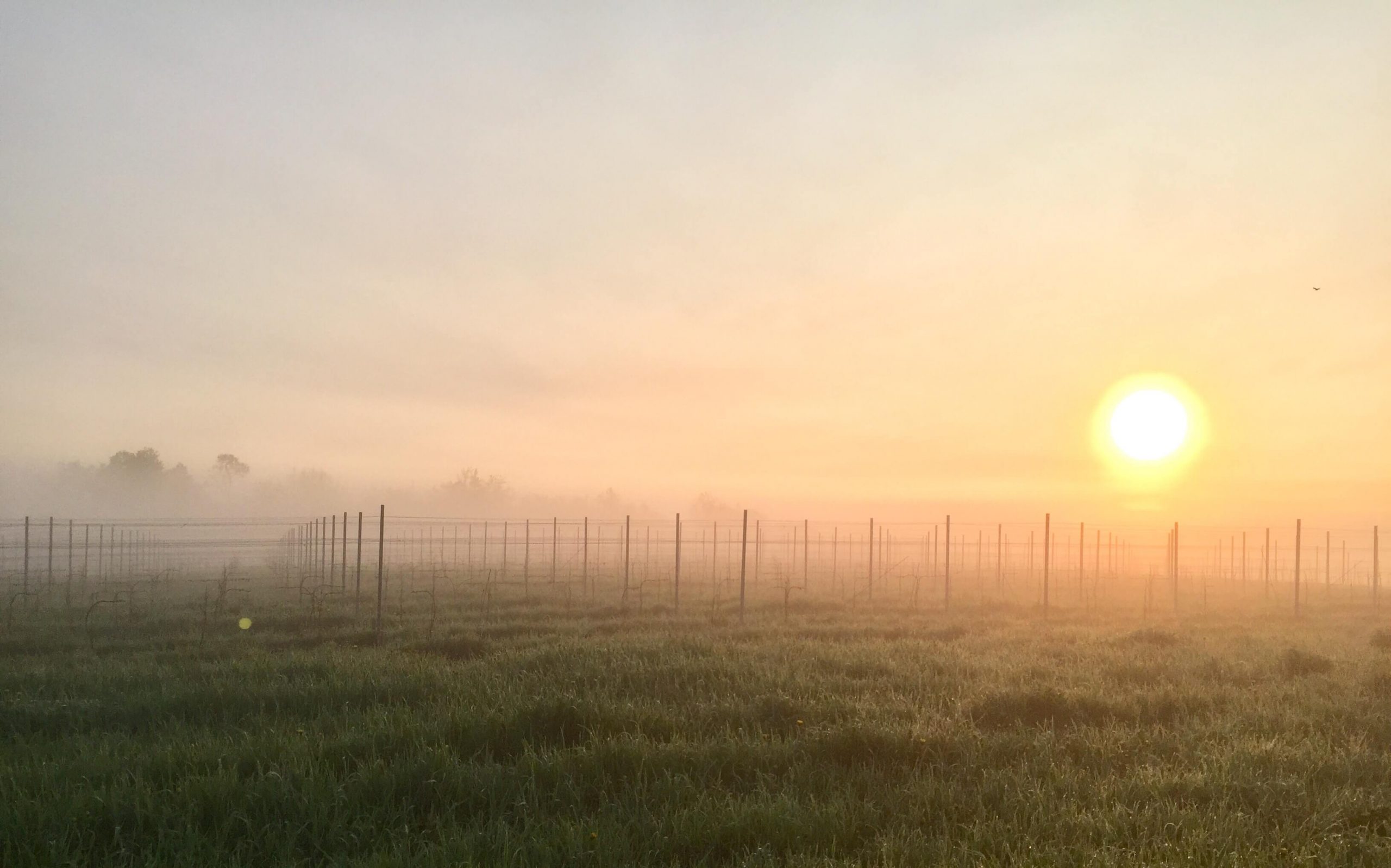Two year old New York Muscat under threatening summer sky.
General comments: The most amazing thing about the vineyard this summer was the tremendous growth that took place. Top growers were the Marquette, Petite Pearl, Riesling and Chardonnay. The Marquette was so vigorous that it was necessary to allow a crop of grapes to ripen. Approximately 1 ton will be taken from the 2 acres of vines. The potted Cab Foch that survived the planting last year developed crown gall and many were cut out. The 2 year old bare root stock did much better and there was little crown gall. The current theory is that the potted plants were stressed last year (1/3 died cause unknown) and were susceptible to disease. This suggests that Cab Foch must be handled with great care. It will be worth it as it, along with the Marquette and Petite Pearl, will provide the backbone for Nova Scotia’s future red “tidal bay”. Commercial fertilizer was spread on the upper section and chicken manure was spread on the mid-section (which was planted this spring). Commercial fertilizer will be spread on the mid-section and chicken manure on the lower section in September. Chicken manure contains much more potassium and phosphorus than commercial fertilizer and is cheaper. One wants to avoid using it on actively growing vines because of the high nitrogen content. A 7 foot mower deck was bought from Van Oostrum Farm Supplies, Port Williams. A 6 foot deck would leave a strip of grass on each side while the 7 foot deck did not, but greater care needs to be taken to avoid clipping the line posts. A 2100 gallon water cistern was added providing a total of 3200 gallons of roof water capacity. Ian Kaye of NS Vines (now Inscenza Capital Inc) continues to provide consulting services while Wayne Sexton (Wayne’s Land Improvements Ltd) serves as vineyard manager and equipment operator. Both individuals deserve all the credit for the success of Johnston Vineyards.
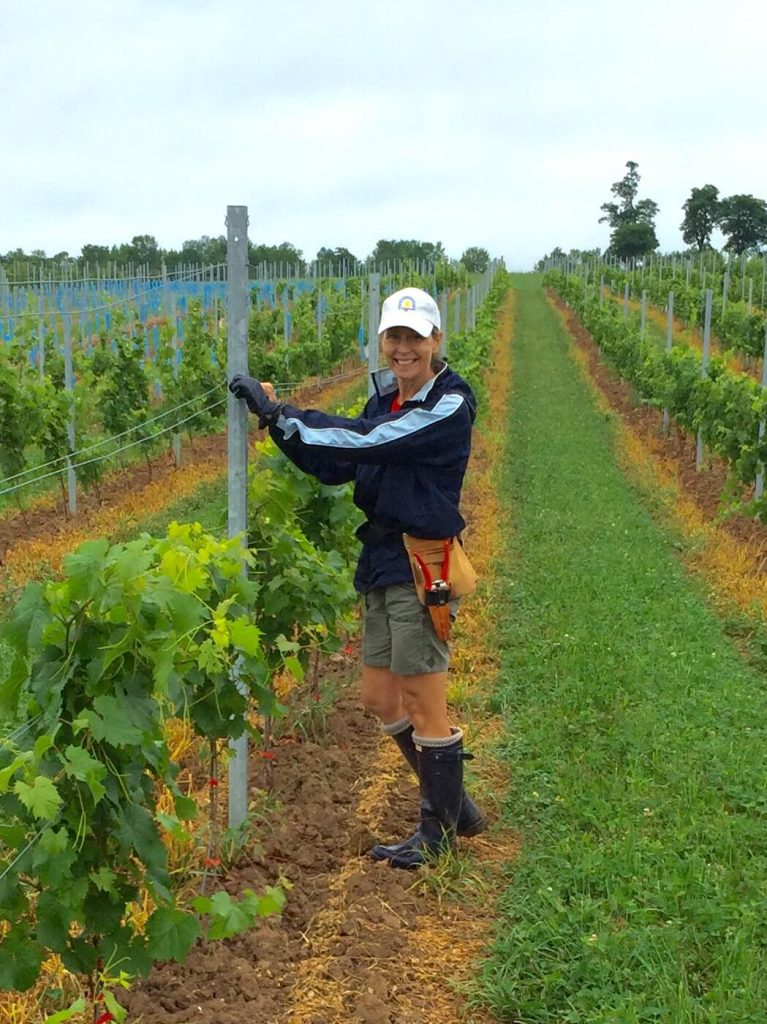
Co-owner Sharon Mulvagh tending to the Cabernet Foch.
Weed control: Early spring weed control was partially achieved with uphilling in the fall of the vinifera. Roundup was sprayed before bud break without concern of vine damage, but after bud break the trunks had to be pruned clean and shoots tied up before spraying Ignite. Wayne Sexton devised a wand equipped with an arc nozzle that attaches to the front of the RTV and runs by a battery attachment to the RTV. If I were to do it again I would use a spray tank that could support 2 nozzles, one on each side of the RTV so that 2 rows could be done simultaneously. Small plants or new second trunks were covered by milk cartons before spraying. Johnston Vineyards intends to uphill both cold hardy hybrids and vinifera vines this fall. Uphilling is intended to protect more tender varieties against winter damage associated with fluctuations in temperature. It may be of limited value as the winter wears on since rain washes down the mounded soil.
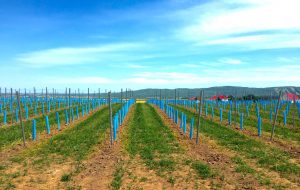
Clean rows (sprayed with Ignite) in spring planted bareroot Seyval Blanc (grafted with 3309).

The grow tubes are off (September 3).
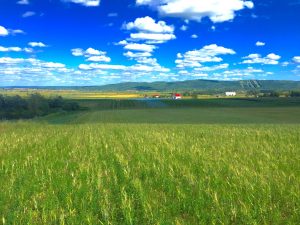
The vineyard from Lloyd Zinck’s property at the top of the hill.
Grape hoe: Johnston Vineyards purchased a grape hoe with several attachments with support from a NS Department of Agriculture Innovation grant. This hoe should eliminate herbicide usage on plants in the ground more than one year. The hoe, a Clemens dual radius weeder mounted on a Hexagon frame was purchased from Klaus Sudbrack (Shemoque Custom and Trellis Inc). Clearing shares, cerrated disk plows, and serrated discs for uphilling were also purchased. Be aware, it came in a box and needed to be put together. Wheels are recommended rather than depending on the 3 point hitch. There is a learning curve associated with its usage. Dense, tall weeds are not handled well and bind up the attachments (and this bends the rods). The cutting blade needs to be adjusted depending on the soil compactness. Extra runs need to be made to loosen the soil before the hoe achieves peak efficacy. The most efficient way to weed a new vineyard seems to be to spray herbicide twice the first year when the grow tubes are on then if further weeding is needed (probably doesn’t) use the grape hoe when the tubes are removed and the support rods are clipped to the fruiting wire in September. The hoe didn’t get put into operation until September so a report on the function of the attachments is not yet available.
Weather: It was dry in Nova Scotia this summer but that didn’t affect the vines one bit and growth was vigorous. There was no indication for irrigation even for the newly planted bareroot stock. I believe that potted plants would have needed irrigation. Roof rain was able to provide all the needed water. It is a very efficient system!
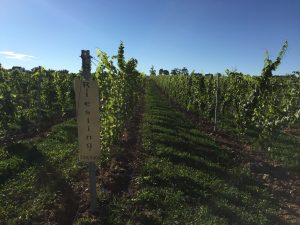

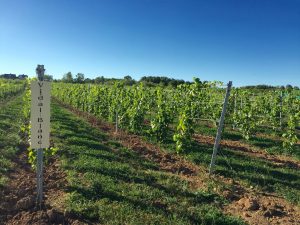
The dry weather had no effect on these varieties.
Spray program/sustainable farming: A sustainable farming program using an innovative blend of environmentally sound, economically feasible and socially equitable practices that ensure preservation of the land, business and people is being pursued at Johnston Vineyards. This entails the use of an integrated pest management (IPM) program. Dormant oil was sprayed before bud break. Sulfur and copper was sprayed every 2 weeks in the summer and led to good control of fungus except for an outbreak of Black Rot in the NY muscat and perhaps the Cab Foch. This required that the whole vineyard be sprayed once with the fungicide Nova. Serenade, a botrytis fungicide was sprayed on the Marquette at veraison. In addition, the nutrients Magmax, zinc and potassium were sprayed. Many vines showed evidence of potassium deficiency which was consistent with previous soil samples. Organic farming may not be the most sustainable method of farming due to more tractor time and the ensuing fuel use and land compaction. Copper levels are already too high in the upper vineyard due to old apple spray residual. In addition poorly controlled disease may add cost and loss of income and undermine the business model. For the moment Johnston Vineyards is pursuing a “partial”organic farming model that may be more sustainable than certified organic farming.
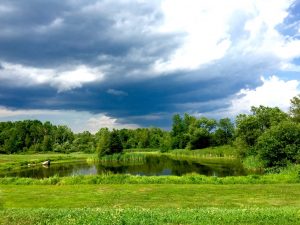
Pond shared by Lloyd Zinck and Johnston Vineyards.
Grape harvest: Remarkably, it will be possible to harvest a small crop of Marquette grapes this fall. These grapes will go to Lightfoot and Wolfville Winery. The clusters were thinned by one half and bird netting applied shortly after veraison. The vines were hedged and deleafed mechanically just before veraison. Raccoon netting was purchased from Phoenix Agritech in Debert (902-662-2444). They also sell a lot of bird alarms to airports and farmers around the world. I bought 2 bird alarms from Klaus Sudbreck but is is difficult to assess their efficacy just yet. I calculate that 6 alarm systems will cover 21 acres of vines next year and will hopefully keep the birds out of the white grapes once cannons are added. To cover all the vines with netting would be a monumental task and finding storage space for the netting would be a problem. The red grapes will need to be netted.
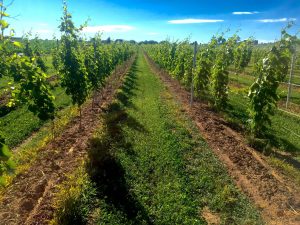
Marquette vines in July 2016.
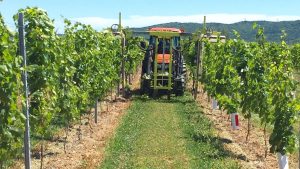
Hedger cuts the tops and sides off the Marquette vines.
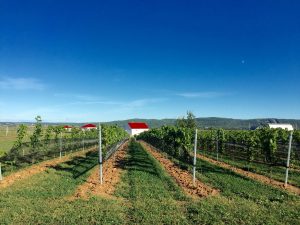
Marquette are netted against the birds.
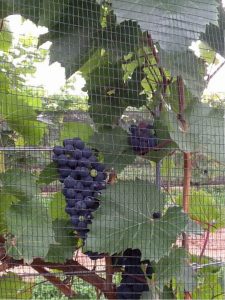
Ripening Marquette clusters.
Future planting: Plans are being made for one last planting at Johnston Vineyards. The lower section consists of 8 acres that will be planted in Chardonnay, Pinot Noir, Cabernet Foch and Geisenheim -318 next spring. The plan is to plow and harrow (done) and level the section and then harrow in manure and lime this fall. It will be reharrowed and seeded with a cover crop of peas, clover and rye in the spring just before vine planting. Part of the mid-section will also be planted with Petite Milo ((a cold hardy vine grafted on 3309 – all ungrafted stock in Nova Scotia was killed by phylloxera). It is my feeling that any new planting of cold hardy vines should be with grafted root stock if available.
